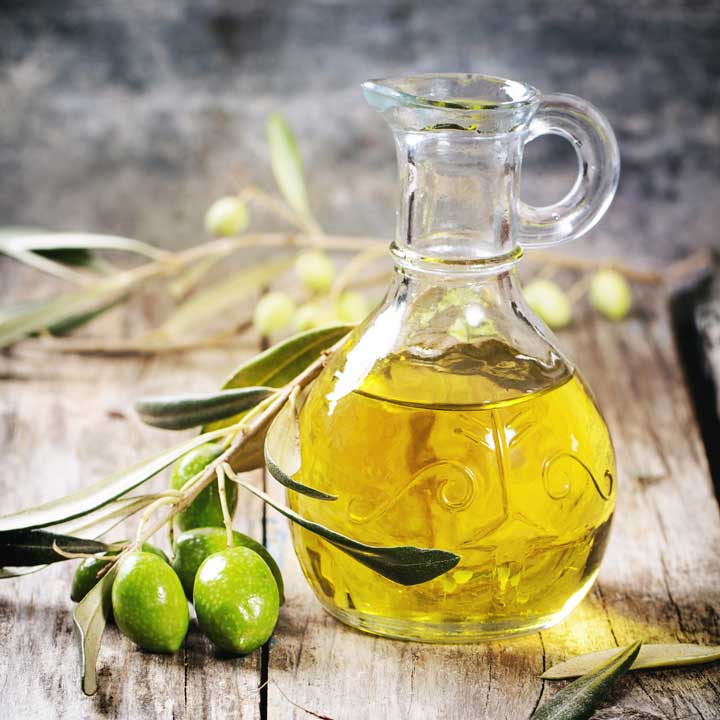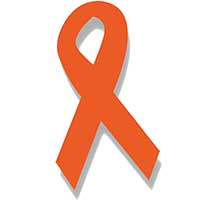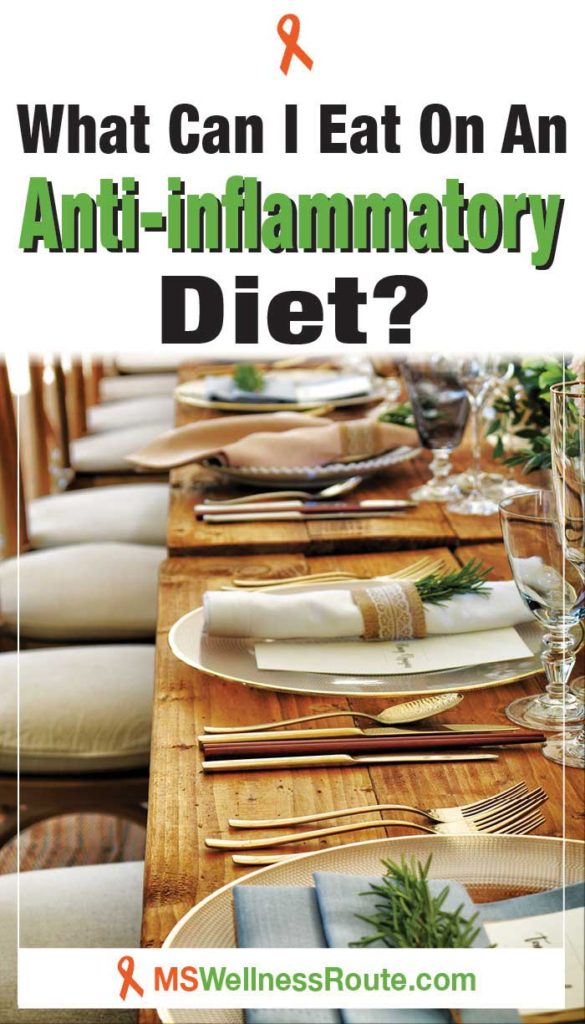Last Updated on November 26, 2023 by Cathy

People have managed their multiple sclerosis (MS) by eating an anti-inflammatory diet since the late 1940s. Eating a well-balanced nutrient-dense diet can stop the progression of MS. You may be wondering what can I eat on an anti-inflammatory diet.
An anti-inflammatory diet includes a wide range of vegetables and healthy fats. Also, a moderate amount of fruit and proteins to reduce inflammation. Herbs and spices not only enhance the flavor of food but also to provide many health benefits.
Probiotic and prebiotic foods such as sauerkraut improve your microbiome. Eating foods high in fiber will keep your digestion system running smoothly.
The current western diet consists of processed foods, refined sugar, and unhealthy fats. It leads to acne, fatigue, low energy, high blood pressure, and chronic inflammation. Studies found chronic inflammation leads to many diseases and health conditions, including:
- Autoimmune diseases
- Heart disease
- Obesity
- Skin issues
- Some cancers
- Type 2 diabetes
Eating an anti-inflammatory diet can help lower inflammation allowing your body to heal. There are many healthy diets to choose from for MS. Including:
- Best Bet Diet (BBD)
- Overcoming MS diet (OMS)
- Paleo
- McDougall diet (low-fat, plant-based)
- The Swank diet
- The Wahls Protocol (paleo-based)
I’ve been on many different diets trying to find that perfect one. What I found is… there is no perfect diet. Since everyone is different their body is going to react differently to the same food.
Your first step should be to stop eating processed foods and eat clean, whole foods instead.
Eat more plants!

Eat a wide range of vegetables including leafy greens, sulfur, and colored all the way through. Enjoy fruit in moderation since they are higher in sugar. Vegetables and fruit provide vitamins, minerals, antioxidants, fiber, and micronutrients.
They fight cellular damage, promote digestive health and lower chronic inflammation. All fruits and vegetables are good to eat except corn because it’s a grain. Some people avoid green beans and peas because they are legumes. It’s up to you if you want to eat these, you are the expert on your own body.
Beware of nightshades such as tomatoes, bell peppers, and eggplant. Oftentimes, people with an autoimmune disease have a food sensitivity to these plants. There are also nightshade herbs such as paprika to watch out for.
Spice It Up
Herbs and spices include anti-inflammatory and antifungal benefits. They also include antioxidants and have neuroprotective properties. Include herbs with every meal to enhance the flavor of your food and for all the medical benefits.
To save money grow them in your garden or pots on your kitchen window sill. They are easy to grow and they always taste better when you grow them yourself.
Choose Healthy Fats

Use healthy fats and oils that are pro-inflammatory. Avoid highly processed fats such as canola oil, margarine, or trans fat. Always read labels, sometimes healthy food, such as nuts, will include unhealthy fats.
Eat more omega-3 fats such as fish and walnuts and reduce omega-6 fats. Try to eat a ratio of 1:1 of each. Omega-6 fats come mainly from seed oils such as sunflower oil. Most Americans eat 10 times more omega-6 than omega-3.
Feed the Good Bugs

Fruits and vegetables are rich in fiber, which serves as a nourishing source for the good bacteria in your gut. This fiber is prebiotic, promoting the growth and activity of beneficial microorganisms in your digestive system, contributing to overall gut health.
Foods that are high in fiber help to maintain a healthy bowel movement. This prevents constipation and protects against colon cancer. Fiber also feeds the good bacteria allowing them to grow. Since it takes longer for your body to break down fiber this helps keep your blood sugar level. – If you’re constipated eat more fruit!
Eat Less Meat
Most Americans eat meat as the main course and vegetables as the side dish – it is the other way around. Eat no more than a palm-size of meat twice a day. Especially red meat because it can increase inflammation.
Avoid conventional meats as much as possible to avoid antibiotics and growth hormones. Ranchers feed them GMO grains and soy to fatten them up before slaughter. Farm-raised fish feed on corn, soy, and vegetable oils. They are naturally grey, unlike wild salmon which are pink. They’re supplemented with synthetics to give them a pink color like wild salmon.
Meats to buy:
- Wild-caught fish
- Pasture-raised poultry
- Pasture-raised, grass-fed meats (beef, bison, lamb, pork, rabbit)
- Nuts and Seeds
Nuts and seeds provide healthy fats, protein, and fiber. If you suffer from constipation fresh ground flaxseeds are like nature’s laxatives. I use a coffee/seed grinder and keep it in my refrigerator to keep it from going rancid.
If you have a leaky gut, nuts and seeds may be a little hard on your gut. Try avoiding them for one month then reintroduce them one at a time to see if your body reacts. You can also soak them in water overnight to reduce the amount of phytic acid and other antinutrients.
Phytic acid impairs the absorption of iron, zinc, and calcium promoting mineral deficiencies.
Watch for Food Sensitivities
Next, you need to remove any food item that causes your body a bad reaction. Such as constipation, diarrhea, gut pains, heartburn, headaches, or skin issues.
Sometimes it’s obvious which foods cause a problem other times it’s not as noticeable. Trying an elimination diet can help you determine which foods are the culprit. This is how I found out I was sensitive to peppers and tomatoes.
Even after I tried the elimination diet I was still having problems with my face breaking out in a rash. I eventually had a food sensitivity test to find any other foods I have a sensitivity to.
A food sensitivity is different than a food allergy which can be life-threatening. A food sensitivity checks for an immune response by the IgG antibody, and a food allergy test checks for IgE antibodies.
When I got my test results back there were many foods I was sensitive to. I was highly sensitive to grapes, coconut, arugula, sumac (a spice), woodruff (an herb), peppers, and eggs. And moderately sensitive to avocados, chocolate, grapefruit, pears, tomatoes, tuna, and watermelon.
No wonder I couldn’t figure out what was causing my rashes!
Quick Links To Information In This Post:
Healthy Fats Improve Your Health
Foods That Are Highest In Fiber
Why You Should Try An Elimination Diet
Fine Tuning Your Diet

After you mastered the basics, fine-tune the diet to fit your body’s needs. Remove all foods that your body reacts to. You may also need to eat less protein or include more carbohydrates.
Keeping a food journal will help you keep track of how you feel after eating. Eating foods that you find satisfying and delicious will keep you motivated.
You won’t need to eat a strict diet for the rest of your life. After you have healed then you can start to add “healthy” foods back into your diet such as quinoa (a non-gluten flour). Be sure to test them one at a time so you will know which food caused a problem.

Free Wellness Library!
Subscribe for free and I’ll send you the password to my secret library filled with many printables for your wellness journey.
Want to remember this health tip? Pin it to your favorite Pinterest board!

Resources:
https://www.ncbi.nlm.nih.gov/pmc/articles/PMC6132382/
What can I eat on an anti-inflammatory diet?





